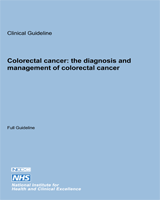From: 4, Management of metastatic disease

NCBI Bookshelf. A service of the National Library of Medicine, National Institutes of Health.
| Quality assessment | |||||||
|---|---|---|---|---|---|---|---|
| No of studies | Design | Limitations | Inconsistency | Indirectness | Imprecision | Other considerations | Quality |
| Length of Hospital Stay | |||||||
| 81 | observational studies | serious2 | serious3 | no serious indirectness | no serious imprecision | none | VERY LOW |
| 41 | observational studies | serious2 | serious4 | no serious indirectness | no serious imprecision | none | |
| Morbidity | |||||||
| 135 | observational studies | serious2 | no serious inconsistency | no serious indirectness | no serious imprecision | none | VERY LOW |
| Mortality | |||||||
| 146 | observational studies | serious2 | no serious inconsistency | no serious indirectness | no serious imprecision | none | VERY LOW |
| 5-year survival | |||||||
| 127 | observational studies | serious2 | no serious inconsistency | no serious indirectness | no serious imprecision | none | VERY LOW |
Footnotes:
A total of 11 studies included in the systematic review reported on length of hospital stay. 8/11 reported mean length of hospital stay with standard deviations, while 3 studies reported median length of hospital stay (Hillingo and Jorgensen, 2009). A single retrospective case matched study which was not included in the systematic review as it was published later, also reported median length of hospital stay (Moug et al, 2010).
All studies included in the systematic review (Hillingso and Jorgensen, 2009) were retrospective controlled studies with 2 studies based on prospective databases and the remainder on retrospective analysis of patient data. The methodological quality of the studies included in the systematic review was evaluated using the Newcastle-Ottawa scale and only studies with a score of 8 or more were included in the review; despite this as observational studies rather than randomised trials it is considered that there are serious limitations in study design.
There was significant statistical heterogeneity on pooled analysis, which may have been explained by the differences in populations undergoing each treatment. For example, the review reports that the majority of included studies reported differences between the two patient groups in relation to surgery, primary cancer and metastatic disease.
In patients undergoing resection of primary colonic tumour, all included studies reported that right-sided cancer or minor curative liver resections (wedge or segmentectomies) due to fewer, smaller and uni-lobar metastases, more often resulted in a combined procedure while in patients undergoing staged resections, metastases were more often larger and more numerous. The review also reports that from the included studies, there appeared to be a tendency towards extending the criteria for synchronous resections over time and newer studies reported a greater number of major hepatectomies in more recent years (i.e. more than three segments).
There is inconsistency between the 4 studies reporting median length of hospital stay with 3/4 studies reporting that the median length of hospital stay was lower in the synchronous resection group while 1 study (Hillingso and Jorgensen, 2009) reported a shorter median length of hospital stay in the staged resection group, though in this study, median length of hospital stay was similar for both groups; 15 days in the staged resection group and 18 days in the synchronous resection group.
A total of 12 studies in the systematic review reported on postoperative morbidity and an additional study (Moug et al, 2010) published after the systematic review also reported post-operative morbidity and was included in the evidence assessment and forest plot.
A total of 13 studies in the systematic review reported on mortality and an additional study (Moug et al, 2010) published after the systematic review also reported mortality and was included in the evidence assessment and forest plot.
A total of 11 studies in the systematic review reported on 5 year survival and an additional study (Moug et al, 2010) published after the systematic review also reported 5 year survival and was included in the evidence assessment and forest plot.
From: 4, Management of metastatic disease

NCBI Bookshelf. A service of the National Library of Medicine, National Institutes of Health.